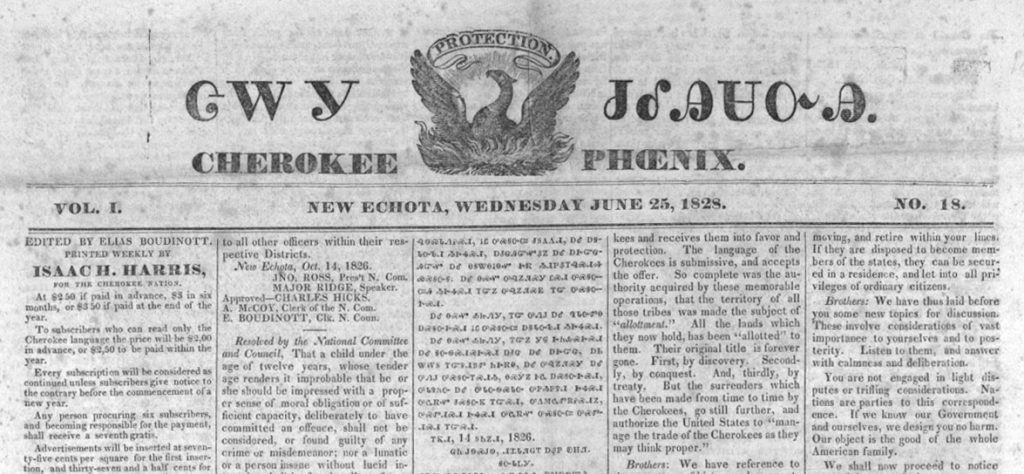
Newspapers have played an important role in documenting and shaping this nation since the time of the Revolutionary War.
For many generations, the newspaper was the only connection people had to what was going on in their communities, counties, states and around the country. Anyone who has been doing research for some time will realize what an important find that birth or death notice from the local newspaper can be. As someone who has both done genealogical research AND worked in the newspaper industry for three decades, I can tell you that newspapers provide an incredibly rich field of information on people and communities at different points in history that simply can’t be found anywhere else.
How does this impact those doing research on Native ancestry? There are two ways. First, there have been newspapers in and around Native communities for well over a century. Many of those publications covered communities in Native territories, especially if there were a significant number of non-Indians living there. Second, a number of tribes operated their own newspapers that provided both specific and broad coverage of the people and entities within the tribal boundaries.
One key example is the Cherokee Phoenix. Founded in the 1820s, the Phoenix has been sharing stories of Cherokee communities right up until the present day. And while there may have been periods where it had a different name or ceased publication altogether (as it did prior to and during the Removal), there is still a great deal of information a researcher can glean not only about individuals who lived there but the challenges that the Cherokee Nation faced both from within and without.
One of the great online sources for newspaper research is the Chronicling America site from the Library of Congress. It features a searchable database of newspaper images from across the country and across history including some that were located in around Native communities. There you can search by specific names or terms and choose from newspapers based on location or by title. Don’t be surprised if many of the newspapers you find have a small and scattered group of images available. Keep in mind that throughout history, newspapers came and went and so some may have had a limited life. Others simply haven’t had printed copies available to be scanned by the Library of Congress. All in all, it’s worth taking a few minutes to thumb through the papers for your Native ancestors.
Check out Chronicling America from the Library of Congress. For those interested in the modern day Cherokee Phoenix, check out their website.
